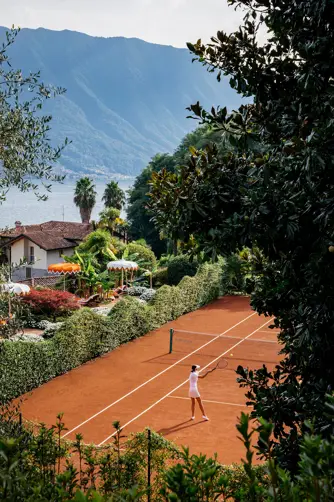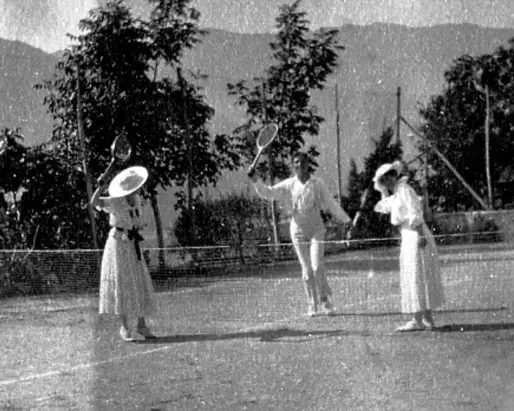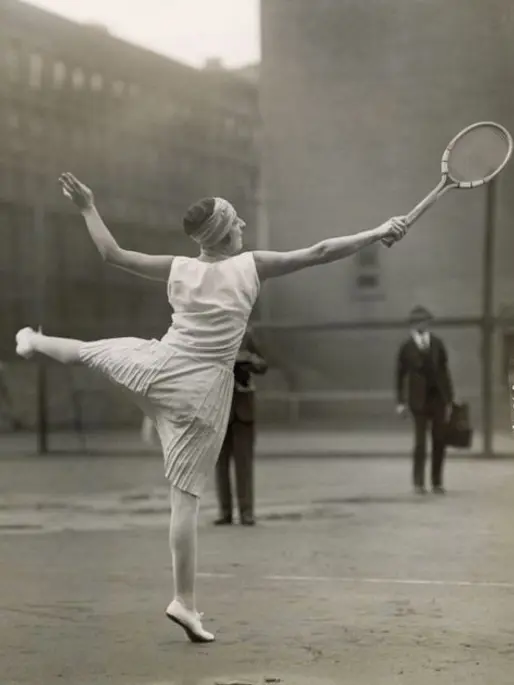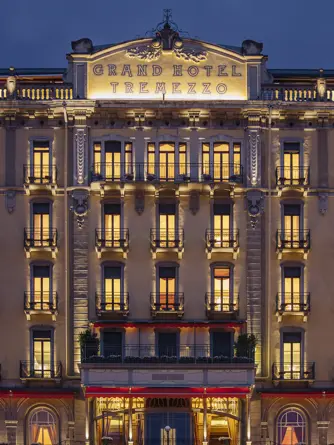Advantage: Freedom

Mariuccia Gandola, an early 20th-century girl, loved to play tennis. It was a pastime encouraged by her parents, Enea Gandola and Maria Orsolini Bolla, the founders of Grand Hotel Tremezzo, who became one of the first estates on Lake Como to have a tennis court in 1910.

This is the same tennis court, surrounded by hedges of fragrant jasmine, where our guests still play today. A black-and-white photograph taken at the time shows Mariuccia on the court with a girlfriend and their teacher. Each is dressed in white, forever the color of summer holidays, with the ladies of the Grand Hotel Tremezzo wearing skirts cut just above the ankle and light summer blouses. Of the two girls in the picture, the one with short sleeves must be Mariuccia – she was always ahead of her time in fashion, more modern and more free.

As it transpires, the tennis court at our hotel has played a role in the emancipation of women in more ways than one. There was a time when women saw emancipation first and foremost as the freedom to move. It’s hard to imagine today how revolutionary it was for women to serve the ball, run up to the net and then back to the baseline. Of course, they had to do so wearing a corset that sapped all of their breath and energy – it was not uncommon in the late 19th century for female players to faint during a match.
The world’s first tennis club opened in England in 1874, but the game’s very British sounding name actually comes from the word “tenez!”, the imperative form of the French verb “to take”. “Hold! Take! Receive!”, the players used to call out before serving – a way of saying: “Let the games begin!”. Throughout Mariuccia’s diary, we find eyewitness accounts of high-profile tennis matches between prominent hotel guests: Prince Ruspoli v. Duke Litta Modigliani, for example, or Baroness Sophie von Edelstrom v. Princess Orsini – not to mention Filippo Tommaso Marinetti, the godfather of Futurism, playing against the personal secretary of hero and poet Gabriele D’Annunzio, Tom Antongini, who was a fabulous tennis player and a former member of the Lawn Tennis Club founded in Milan in 1893. Mariuccia often played mixed doubles with Antongini, whom the ladies at the hotel couldn’t help but admire – a man of exceptional elegance, wearing a white suit, a foulard around his neck and a cap with the typical black visor of a naval officer.

When peace was restored after the First World War, Mariuccia welcomed the first gests to arrive at the Grand Hotel Tremezzo dressed in Chanel. Coco Chanel had appropriated jersey and other wonderfully soft fabrics from men’s fashion and designed her look with these in mind, even producing sporty tennis wear. Mariuccia picked up on Chanel’s sophisticated style and made it her own; photographs show her not only with shorter skirts, but also much sleeker designs throughout her wardrobe. This probably had something to do with the fact that she often, after a game of tennis, loved to row with abandon along the shores of “her” lake. Until, one day, another woman appeared on the horizon, and everything changed. Once again, it is Mariuccia who tells the story, her diary serving as the official biography of the first twenty years of Grand Hotel Tremezzo.
In the pages of Le Figaro – the Gandola family were loyal subscribers to the paper – there appeared one day a photograph of a woman in her twenties playing tennis. She was playing like no woman had ever played before: jumping, flying, dancing. And she was also winning. It was Suzanne Lenglen. The photograph Mariuccia saved in her diary shows Suzanne dominating at Wimbledon in 1920. The “Divine”, as she was known, is wearing an outfit quite revolutionary for the time: a pleated silk skirt cut just below the knee, a sleeveless shirt and a tulle hairband in lieu of a hat. The flapper style had conquered the court – led by Jean Patou, the wonderful Parisian couturier who wrote that particular declaration of ease and independence. Mariuccia made herself an outfit just like it, right down to the hairband. But would she dare sport a flapper bob “à la garçonne”? No sir, that is where she appears to have drawn the line. She decided instead to hold back her very long black hair in a hairband “à la Suzanne” – a hairband that just happens to have a bright orange hue. She must have had a feeling, a premonition. Some sort of emotion drew her to that color, the color of sun and passion, of freedom and joy, and today the signature color of Grand Hotel Tremezzo.



